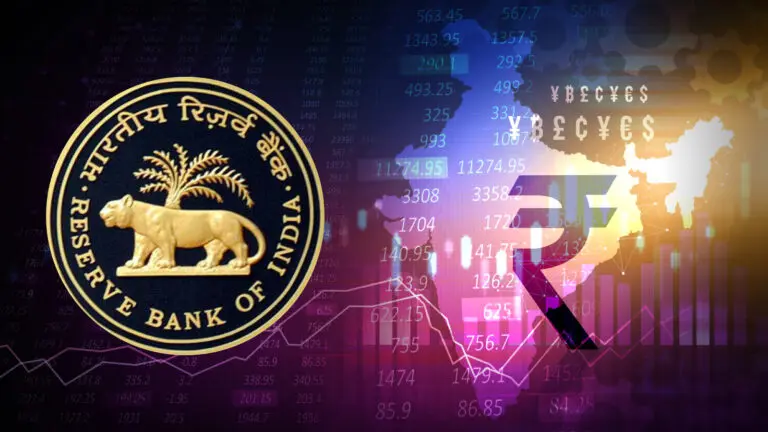
SECOND RATE CUT IN APRIL; AND PROBABLY ONE MORE
RBI Monetary Policy Committee (MPC), in its April 07-09 meeting, cut repo rates by another 25 bps to 6.00%, on top of 25 bps cut in February. This lowered the SDF rate to 5.75%, and the MSF / Bank rate to 6.25%. There were more interesting changes. Stance of the monetary policy was cut from neutral to accommodative, clearly hinting that rates were headed lower. In addition, inflation estimate for FY26 was cut by 20 bps to 4.0%, while GDP growth was also cut by 20 bps to 6.5%; to make the projections aligned with global uncertainty.
Once again, the decision to cut repo rates by 25 bps in April 2025 meeting was unanimous with all the 6 members of the MPC voting in favour of a 25 bps repo rate cut. The change in the monetary policy stance was used to magnify the message of dovishness. The shift in stance can be construed as an indication that, for now, rates will either trend lower or remain stable. The market is pencilling in another 25 bps rate cut in June, although the picture beyond that is quite hazy. Here are the gist of the MPC minutes.
Nagesh Kumar once again expressed concerns over the way the GDP growth has been depressed in each quarter of FY25. The fourth quarter data is awaited on the last day of May 2025. According to Nagesh Kumar, unlike other countries, India has held its poise and not retaliated to the US reciprocal tariffs. While the tariffs are on a 90-day hold for now, it is active on China. Also, the tariffs at 26%, are much lower in the case of India, as compared to other Asian economies. According to Nagesh Kumar, the need of the hour was to boost growth through lower rates and, more importantly, offset the pernicious trade and growth effects of the reciprocal tariffs.
Saugata Bhattacharya also voted for a 25 bps rate cut and shift in the stance of the monetary policy from neutral to accommodative. According to Bhattacharya, India cannot afford to be too sanguine about the fact that it is less impacted by the tariffs. Supply chain constraints are likely to hit all countries uniformly, irrespective of tariff rate advantages. He has underlined that while the high frequency indicators point to resilient growth in Q4FY25, the high probability of an inflation spike and consequent fall in consumption cannot be ruled out. While Bhattacharya is confident of inflation holding around 4.0%, he believes that the real risk could be a consumption slowdown; and that is what rate cuts will pre-empt.
Ram Singh of the Delhi School of Economics underlined that, more than outlook on rates, it was the policy guidance that really mattered. From that perspective, the shift in monetary stance from neutral to accommodative sends the right signals. For FY26, Ram Singh is confident about the robust performance of agriculture and services. However, industrial growth is likely to lag compared to previous years. To encourage private capex to make up for the central shortfall, a durable low interest rate policy was the right prescription.
According to Rajiv Ranjan, the need of the hour is to ensure that there is persistent impetus for growth through a mix of monetary and fiscal measures. Despite the domestic nature of Indian growth, the global uncertainty will impact export driven industries, services surplus, supply chains, and the flow of FDI and FPI money. This is logical as the focus is not just on growth, but also in being risk-off. Rajiv Ranjan also favoured an accommodative policy stance to address the low inflation, weak growth dichotomy.
Rajeshwar Rao believes that OECD cutting global growth estimates could have spillover risks for Indian economy. This could manifest as slowing exports, imported inflation and a shift in FPI flows to risk-off geographies. In short, global risks may be deeper and more far-reaching than is apparent at this juncture. While Rao is confident that inflation can be kept in check, his concern is that low inflation may be an outcome of weak growth and weak demand. Hence a dovish policy with an accommodative stance sends out the appropriate signal.
According to the RBI governor, there are two axioms in the Indian economy. Firstly, globally driven growth is likely to be impacted and hence must be offset by giving a push to domestic growth impulses. Secondly, while consumer inflation has moderated to 3.34%, the global tariff hike could eventually spike imported inflation. That is something India will have to handle with fiscal policy measures. The best monetary stance at this juncture would be to focus on reviving domestic growth, while remaining vigilant about inflation triggers.
WILL THERE BE ONE MORE RATE CUT IN JUNE 2025?
After 2 consecutive rate cuts, the third rate cut would be a strongly dovish message. But that is what we can gather from the RBI monetary policy statement and the minutes of the MPC meeting. The tariff pause is likely to continue till the end of July 2025, and only after that Trump is likely to make tariffs effective. Even that could be a bargaining ploy, but that is a different matter! For now, it looks like another 25 bps rate cut is on the cards in June policy, although the RBI is likely to pause after that!
Related Tags

Invest wise with Expert advice
![]() IIFL Customer Care Number
IIFL Customer Care Number
(Gold/NCD/NBFC/Insurance/NPS)
1860-267-3000 / 7039-050-000
![]() IIFL Capital Services Support WhatsApp Number
IIFL Capital Services Support WhatsApp Number
+91 9892691696
IIFL Capital Services Limited - Stock Broker SEBI Regn. No: INZ000164132, PMS SEBI Regn. No: INP000002213,IA SEBI Regn. No: INA000000623, SEBI RA Regn. No: INH000000248
ARN NO : 47791 (AMFI Registered Mutual Fund Distributor)

This Certificate Demonstrates That IIFL As An Organization Has Defined And Put In Place Best-Practice Information Security Processes.